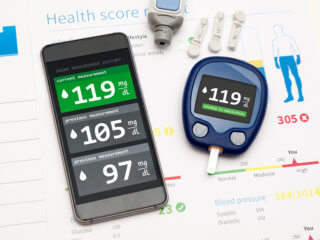The United Nations’ (UN) Department of Economic and Social Affairs (EC-ESA) forecasts that by 2050, the population of older people aged 65 years and above will have surpassed the younger population. This will, therefore, increase the old-age dependency ratio between the old-age and the working-age population. Due to this effect, the more developed countries have devised various strategies such as Ambient Assisted Living as a remedy to this emerging issue.
AAL is one of the most sophisticated remedies. It refers to intelligent systems that assist in ensuring a healthier, safer and better life in the living environment and covers the concepts and services that make a link between the social environment and the new technologies.
It is a concept that seeks to lengthen the period people can live decently within their homes. To achieve this, AAL increases their autonomy and self-confidence. The program also tries to take care of the elderly and the sick, discharge them from the boredom of the monotonous daily activities and to save resources.
Overview of smart home technology
Also called home automation, this is the automation of the household systems such as the lighting system, heating system through the smart thermostat, air conditioning and ventilation and intelligent security systems. Home based appliances such as washers, dry cleaners, and ovens are also included in the automation process.
The technology commonly uses WI-FI to monitor and control home devices remotely. The systems normally consist of sensors and switches linked to a central hub commonly known as a “Gateway.”
This system is controlled by a user interface that is either mounted on a wall, on a smartphone, computer software or a web interface.
| Recommended for you | |
| Role of robots in elderly health care | |
| Health prevention programs to drive healthier lifestyle | |
| Digital health revolution across Europe |
The scope of AAL technology
- Ambient Assisted Living involves the use of integrated information and communication technologies to enable an active and long and independent life.
- Event detection is the most common technique in AAL. The elderly are the most affected with fatigue induced, hence fall detection is mostly emphasized.
- Wrist-worn and waist-worn sensors are commonly used to monitor events in the elderly, but due to the cumbersomeness of the wearables, vision-based fall detection sensors are under research.
- AAL uses straightforward and unobtrusive sensors to reduce confidentiality concerns through measuring environmental parameters and through reducing the human activities by observation.
- The sensors include motion sensors, door contact sensors, temperature sensors, pressure pad sensors, lighting sensors, and appliance status sensors.
- These sensors provide a wide variety of data- for example, motion detectors indicate the physical location of a person, e.g. he/she is in the kitchen, door contact sensors indicate activity on wardrobes and cupboards.
Ambient Assisted living target groups
The use Ambient Assisted Living technology is utilized for the service to the elderly, residents with some form of dementia including those who have the Alzheimer’s disease and other mental disabilities.
People who have the Alzheimer’s disease are confined in an assisted living unit, usually called locked units that aim at applying cognitive and mental exercises to keep their minds refreshed. The goal here is to work towards lengthening the life of the people living with the disease since the disease is not curable.
The technology can also be used by people suffering from cognitive impairments, hearing impairments, physical disabilities and speaking disabilities.
The technology is also relevant to caregivers as it gives the ability to monitor the movement of the individuals they are taking care of to ensure their safety.
Some of the technological ideas available include
- Amica– It puts together physiological sensors with self-reported information through mobile devices. The device can set-off medical alarms and modify minor patient aspects.
- Health@home- This is a Bluetooth-based technology that is crafted for chronic health failures. It uses wearable sensors in the transmission of vital signs, including blood pressure to a server in a health facility. They provide critical health alerts and keep changes of an individual’s health status.
- Hope–This is an integrated platform used to manage a smart home. It includes its services to elements such as communication devices, security devices, and fall prevention devices. It is a technology mainly designed to help people living with the Alzheimer’s disease. It alerts them about the power status of an appliance.
- Remote-This initiative is primarily aimed at developing the wearable and health-monitoring devices. It aids caregivers in monitoring the health of the elderly at risk or living in isolation.
- RGS-Rehabilitation Gaming System is a VR tool that employs the use of game training in helping people with mental problems due to stroke.
- The food this framework seeks to optimize the progress of feeding. It developed a well-structured kitchen environment through connections to the internet, smart devices, and the nearby shopping facilities. The initiative is to ensure health and safety for the elderly in the kitchen.
Conclusion
The rapid growth of technology and the ever increasing demand for the AAL services will make it possible for seniors to lengthen their lives coupled with independent living. It will also simplify the work done by caregivers in keeping track of their loved ones and even clients without giving up their various lifestyle chores to do so.
We can hope that the old-age lifestyle will change for the better so long as much resources and technology are being directed towards the Assisted Living programs.
Do you use any assistive living technology, AAL devices or you are a caregiver? Keep track of our articles for further developments.
Image credit: www.istockphoto.com

















